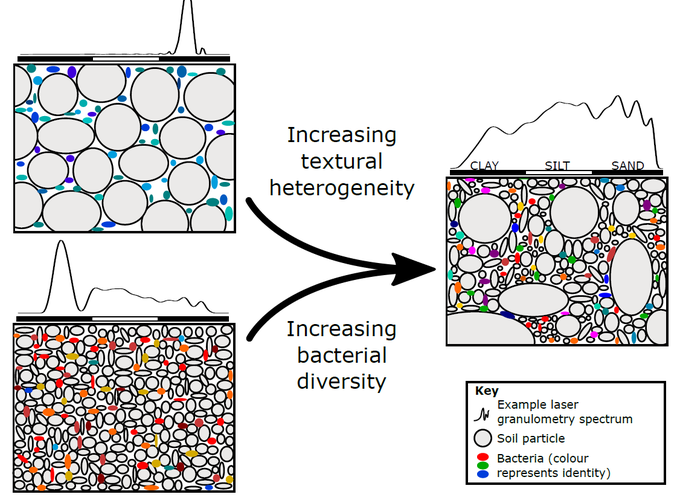Abstract
Soils harbour high levels of microbial diversity, underpinning their ability to provide key soil functions and ecosystem services. The extreme variety of soil microbial life is often explained by reference to the physical and chemical heterogeneity of the soil environment. However, detailed understanding of this link is still lacking, particularly as micro-scale studies are difficult to scale up to the soil profile or landscape level. To address this, we used soil samples collected from a wide range of temperate oceanic habitats (e.g. arable, grassland, coniferous and deciduous woodland, heathland; 335 sites in total) to evaluate the link between soil texture and microbial diversity. Soil particle size distribution was measured in each sample using laser granulometry (i.e. sand, silt, clay), while the diversity of bacterial and fungal communities were determined by metabarcoding with an Illumina MiSeq using16S and ITS1 taxonomy marker gene regions, respectively. Multifractal analysis of the soil particle size distribution was then used to describe the heterogeneity of the soil particle sizes. Overall, our results showed no impact of habitat type upon textural heterogeneity indicating that it is an aspect of soil quality resistant to management decisions. Using a structural equation modelling approach, we show that soil textural heterogeneity positively influences bacterial diversity but had little impact upon fungal diversity. We also find that textural composition impacts both bacterial and fungal composition, with many specific microbial taxa showing co-occurrence relationships with clay and fine-silt sized particles. Our results strongly indicate that soil textural heterogeneity influences microbial community diversity regardless of soil management practices and biophysical activities. The close linkages between different groups of soil organisms can obscure the mechanisms driving the development of biodiversity, however, it is clear that the soil physical environment has differential impacts on organisms with different life history strategies.
